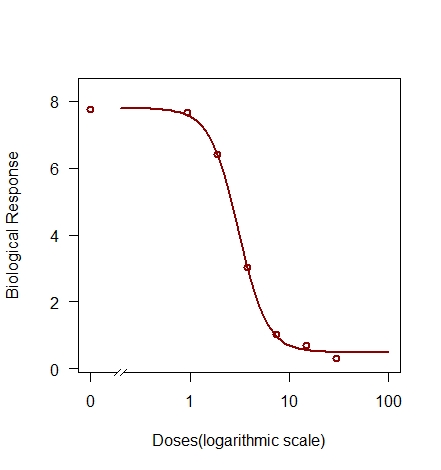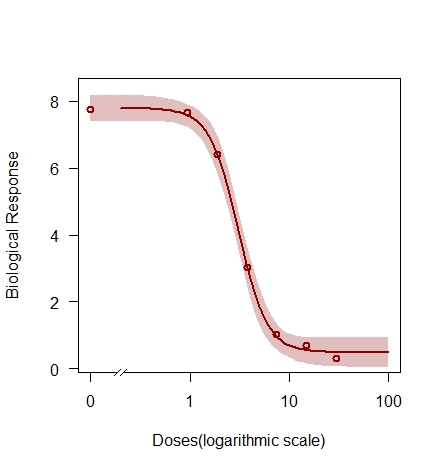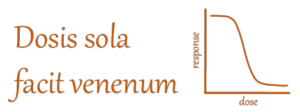DOSE-RESPONSE MODELS
“All models are wrong
but some are useful.”
George E.P. Box
In biology, you cannot really “prove” anything let alone the “true” shape of the proper dose-response curves. Other issues of importance are:
- We can always show the effect of a chemical, it is a question of exposure to a dose; but newer show it does not have any effect on living organism. Dosis sola facit venenum (The dose makes the poison)
- Doing 1000 independent bioassay experiments on the same organism with the same chemicals will inevitably result a new bioassay experiment may find an extreme lower dose that evoke an effect not found in the other1000 previously run bioassay experiments. In other words, we cannot prove any compound to be biologically inert.


Figure 1. The general dose–response curves (left) and with confidence intervals (right). The mean responses are within the 95% confidence inerval estimates (right). Nevertheless, the confidence interval is unique because it only represents one experiment.
Figure 1 illustrates a general do-response curve and its confidence interval. Please note that the smallest 95% confidence band intervals are in the middle of the curve. As mentioned in the legend, these confidence intervals are unique; they only represent the parameters in this single experiment. Consequently, toxicity bioassays must be replicated in time and space to get “more true” confidence intervals that can be used in practice.
One of the problems that non-statistical scientists were facing in the past was that guestimates of nonlinear regression parameters had to be provided upfront before any estimation of parameters could take place. It is an insuperable problem for many practitioners. To a large extent, this problem has now been resolved in the package drc by using the so-called self-starter function.
The development of dose-response analysis has undergone dramatic changes, from struggling with cumbersome more or less manual calculations and transformations with pen and paper to the blink-of-an-eye estimation of relevant parameters on any laptop.
